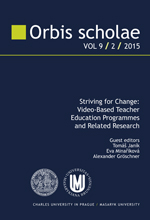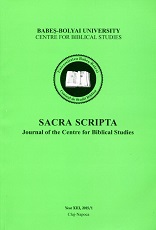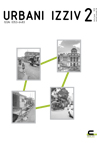
We kindly inform you that, as long as the subject affiliation of our 300.000+ articles is in progress, you might get unsufficient or no results on your third level or second level search. In this case, please broaden your search criteria.



While the construct belief is defined in various ways in teacher education research, most scholars agree that beliefs guide teachers’ decision making and classroom behaviors and thus are an important aspect of teacher competence. Pre-service teachers (PSTs) have been typically found to hold a transmission view of mathematics teaching. The influence of teacher preparation on future teachers’ beliefs about mathematics teaching and learning is unclear. This study investigates beliefs in a sample of U.S. elementary PSTs prior to teacher preparation and examines the impact on belief changes of two different mathematics methods courses. Findings reveal that while PSTs hold a transmission view of mathematics teaching prior to teacher preparation, their beliefs change during the program. In addition, PSTs who attended a video-enhanced mathematics methods course structured around systematic and collaborative analysis of practice showed stronger evidence of alignment with the beliefs that children can solve problems in novel ways before being taught how to solve such problems and that teachers should allow children to do as much of the thinking as possible during instruction, than a group of PSTs who attended a more typical version of the course. Implications for teacher preparation and future research are discussed.
More...


The ability to analyze classroom situations proficiently is regarded as one of the key prerequisites for successful teaching. Although a steadily increasing body of empirical evidence proves that case-based learning with videos can foster professional vision in teachers, it is still necessary to gain a better understanding as to what type of video (one’s own or those of other teachers) is especially impactful in initial teacher education. Against this background, we conducted the intervention study VideA (“Video Analysis in Teacher Education”) in the first year of a Swiss teacher preparation program, whose chief aim consisted in promoting pre-service teachers’ professional vision. Concretely speaking, we compared the students’ (N = 159) and their facilitators’ (N = 26) assessments of case-based learning with their own and other teachers’ videos in terms of self-reported acceptance and effectiveness. Three seminar groups of about 18 second-semester students analyzed videos of their own teaching (Intervention A; n = 56), while three other seminar groups of about the same size analyzed videos of other teachers unknown to them (Intervention B; n = 51). The analyses were moderated by facilitators and supported with supplementary materials originating from the videotaped lessons. Acting as a control group, students in a further three seminar groups solely analyzed written teaching and learning materials, and did not make use of videos altogether (n = 52). The results show that the students’ as well as the facilitators’ ratings are quite high, irrespective of the examples of actual teaching practice used. Yet a comparison of the two video settings revealed that learning with one’s own videos received a higher degree of acceptance from both the students and the facilitators than working with other teachers’ videos. The same applies to effectiveness, which got slightly higher ratings in Intervention A than in Intervention B.
More...

Der Spitzensatz des johanneischen Prologs Joh 1,14b „und das Wort ist Fleisch geworden und hat unter uns gezeltet“ weist durch den Begriff des „Zeltens“ als dauerhaften Mitseins Analogien zur jüdischen Weisheitsspekulation, insbesondere zu Sir 24 auf. Doch der Logos des Prologs handelt in gewisser Weise deutlich exklusiver als die Weisheit, indem er sich nicht inmitten seines Volkes niederlässt, sondern unlösbar an den Menschen Jesus von Nazaret bindet. Dabei lässt sich zeigen, wie die im Laufe der Jahrhunderte immer wieder modifizierte Schechina-Theologie im Johannesevangelium so transformiert wird, dass Jesus Christus selbst als die Schechina JHWHs erscheint: Er ist der neue Ort der Begegnung zwischen Gott und Mensch.
More...






The urban dynamics in eastern Europe after the fall of communism (seen as a consequence of the changes generated by the transition to a new ideology) have highlighted deficiencies in local public services, including the public transport system. To identify and illustrate the shortcomings of a public transport system from this region, we analysed the transport network of Iaşi (Romania) by taking into consideration various dimensions of efficiency. Partial indicators were used as input for a geospatial analysis and to create complex indicators, which can be used both as tools to measure the performance of a public transport network and as instruments to evaluate the local administration and decision-makers. The results highlight the performance level of the transport network analysed, revealing a core-periphery structure (in the context of a polynucleated city) resulting from relics of the communist period. A GIS analysis was used to assess the efficiency of the public transport network in order to identify and visualise strengths and weaknesses in the local transport system.
More...
Since the beginning of the new millennium, the use of digital video for teacher education and professional development (PD) has grown into a burgeoning and exciting field of research and development (R&D). The collection of empirical studies in this special issue clearly exemplifies this trend. I will begin this comment by pointing out the societal relevance of developments in this field. Then I will discuss the nature of the findings of the six studies and their implications for the design of video interventions as well as for theory and research.
More...


Dinamika mest v Vzhodni Evropi po padcu komunizma (kot posledica sprememb, ki jih je povzročil prehod k novi ideologiji) je razkrila pomanjkljivosti lokalnih javnih storitev, vključno z javnim prometnim sistemom. Za določitev in ponazoritev pomanjkljivosti tega sistema na tem območju smo analizirali prometno omrežje v romunskem mestu Iasi, pri čemer smo upoštevali različne vidike njegove učinkovitosti. Na podlagi delnih kazalnikov smo izvedli geoprostorsko analizo in oblikovali kompleksne kazalnike, ki se lahko uporabljajo kot orodja za merjenje uspešnosti javnega prometnega omrežja ter ocenjevanje lokalne uprave in odločevalcev. Rezultati kažejo raven uspešnosti analiziranega prometnega omrežja in razkrivajo, da poteka od centra proti obrobju (v policentričnem mestu), kar je ostanek komunistične dobe. Za oceno učinkovitosti javnega prometnega omrežja smo uporabili analizo GIS, s katero smo ugotovili ter prikazali prednosti in slabosti lokalnega prometnega omrežja.
More...